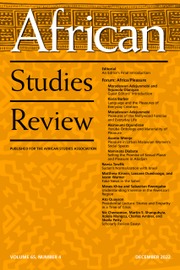Part of review forum on “Children of the Soil: The Power of Built Form in Urban Madagascar”
Children of the Soil is a timely, well-argued, and innovative take on the significance of built form and indigeneity in Mahajanga, an Indian Ocean port city in the northwestern part of Madagascar, beginning in the mid-eighteenth century. In Mahajanga, a self-proclaimed “city of migrants,” Rijke-Epstein explores the materiality of urban belonging. In analyzing this multiethnic and multiracial population of this port city, she reflects on the impact of materiality through ideas of architectural refusal, migration, and labor for rethinking urbanism and identity in East Africa. While Malagasy people of Comorian descent, through generations, established themselves as zanatany—the titular “children of the soil”—anchored there by what and how they built, ultimately the rotaka of the 1970s showed how they were still vulnerable to violence and xenophobia.
Although steeped in rich archival detail and ethnographic evidence, Rijke-Epstein also focuses on an additional source: the built environment. Further, the visual sources—maps and photographs—are a compelling companion to the analysis of space. Braiding together the presences and absences in this landscape, she argues that engaging with this complex brew reveals what was at stake in understanding community and belonging for people in Mahajanga. By tracing the materials they built with, and what they did with their homes and mosques and the built environment over nearly two hundred years, she reveals how Comorians are often at the center of what we learn about identity in Madagascar. Ultimately, one learns more about the belonging and being “really” Malagasy from their experiences of exclusion and colonialism.
Children of the Soil offers three important interventions for rethinking the histories of people and place in the nineteenth and twentieth century. First, in the context of a perceived “lack” of usable primary sources, she demonstrates the importance of recognizing the archives that we live with. By reading the earth’s archive—of rock and limestone—that were used as building material in towns, alongside the traditional archives of documents, maps, photographs, and interviews, she offers a skillful method for engaging carefully with people on their own lived terms. Of course, a drawback of reading the built environment is that infrastructure like mosques, government buildings, and palaces will often be better situated and less difficult to document than ordinary homes built with softer, less durable material. Also, this method leaves us with an exterior sense of history, outside of the domestic spaces where these zanatany identities were no doubt building, shifting, and developing over time. Second, the book demonstrates the importance of urban research being interdisciplinary and rooted in kinds of ethical reckoning that acknowledges power differentials, as they change through time: from the periods that we consider, and the periods and place in which we write from. Finally, it helps to reflect on the significance of what it means to be urban in Africa: historically, spatially, and racially.
The book accomplishes all this in three parts, each containing two chapters. In the first chapter, she explores the city’s origins, looking at the competing narratives that bring the city’s toponymy, culminating in what becomes a “reluctant” landscape. She explores Mahajanga’s origins, and its development in the nineteenth century as a space for both the living and the dead. Reading the landscape is always important in this city, and in Chapter Two, she explores the inscription of Merina rule in space and the rova (fort and royal palace) on the Sarobengo hilltop. In Part Two, the emphasis shifts to the growing Comorian communities: especially the ways their homes and mosques form the template for understanding their attachment to the land. Chapter Three turns to questions of French colonial planning and infrastructure, and the politics of architectural refusal as people go against French visions for the city. Also important are questions of labor, Comorian migration, and the ways their limestone-built mosques both anchored them in place and resisted urban planning. In the last two chapters that form “Residual Lives and Afterlives,” the book dwells on the emergence of the “Comorian City,” mixed Comorian-Malagasy families, and impact of waste and sewage on the urban landscape. Rijke-Epstein’s book is a valuable addition to the literature on the histories of cities in Africa, especially those that foreground the experiences of the men and women struggling to survive in them.


